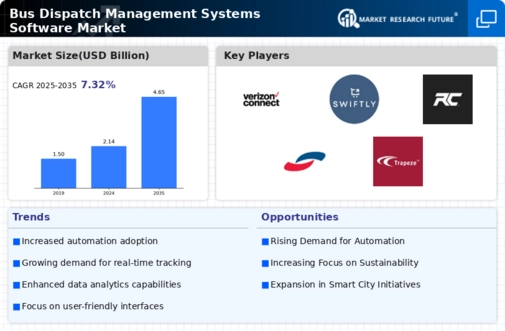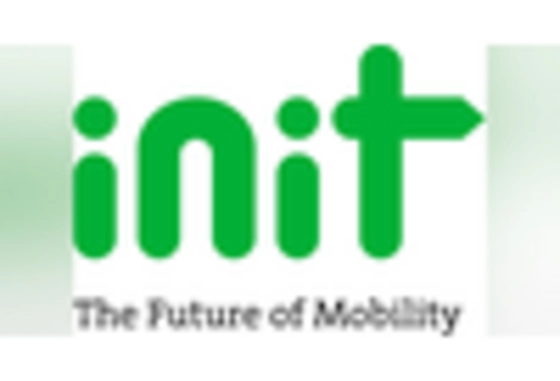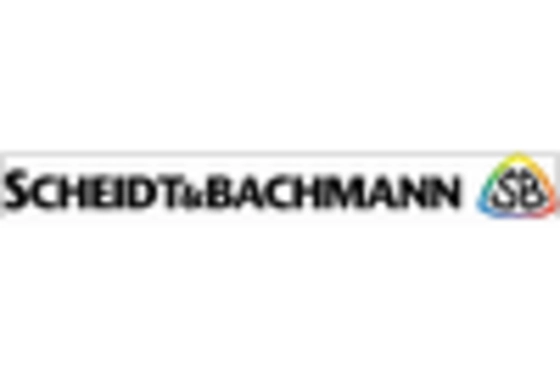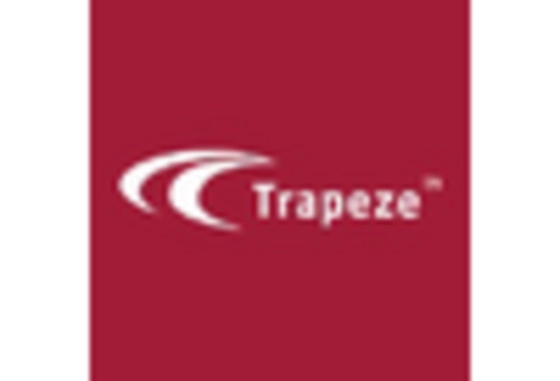Government Initiatives and Funding
Government initiatives play a pivotal role in shaping the Bus Dispatch Management Systems Software Market. Many governments are prioritizing investments in public transportation infrastructure to promote sustainable urban mobility. Funding programs aimed at modernizing transit systems are becoming more prevalent, with allocations for technology upgrades and system integrations. For instance, recent government budgets have earmarked millions for the implementation of smart transit solutions, which include advanced dispatch management systems. This financial support not only enhances the capabilities of existing systems but also encourages the adoption of innovative technologies, thereby fostering market expansion.
Integration of Real-Time Data Analytics
The Bus Dispatch Management Systems Software Market is increasingly driven by the integration of real-time data analytics. This technology enables transit authorities to monitor bus locations, passenger counts, and traffic conditions instantaneously. By leveraging data analytics, operators can optimize routes and schedules, thereby enhancing operational efficiency. According to recent studies, the adoption of real-time analytics can lead to a 20% reduction in operational costs. Furthermore, the ability to make data-driven decisions allows for improved service reliability, which is crucial in attracting and retaining passengers. As cities expand and public transportation demands grow, the need for sophisticated analytics in bus dispatch systems becomes more pronounced, indicating a robust growth trajectory for the market.
Focus on Passenger Experience Enhancement
Enhancing passenger experience is a key driver in the Bus Dispatch Management Systems Software Market. Transit authorities are increasingly recognizing the importance of user-friendly interfaces and reliable service. Features such as mobile applications for real-time tracking and notifications are becoming standard. Research indicates that systems that prioritize passenger experience can see a 30% increase in ridership. As competition among transit providers intensifies, the emphasis on customer satisfaction is likely to drive the adoption of advanced dispatch management solutions. This focus on improving the overall travel experience is expected to significantly influence market dynamics in the coming years.
Adoption of Electric and Eco-Friendly Buses
The shift towards electric and eco-friendly buses is emerging as a significant driver in the Bus Dispatch Management Systems Software Market. As environmental concerns gain prominence, transit agencies are increasingly investing in sustainable bus fleets. The integration of dispatch management systems with electric vehicle technology allows for optimized charging schedules and route planning, which can enhance operational efficiency. Market analysis suggests that the electric bus segment is expected to grow at a rate of 25% annually, driven by both regulatory pressures and consumer preferences for greener transportation options. This transition not only supports sustainability goals but also presents new opportunities for software solutions tailored to electric bus operations.
Rising Demand for Efficient Public Transportation
The Bus Dispatch Management Systems Software Market is experiencing a surge in demand for efficient public transportation solutions. Urbanization trends have led to increased passenger volumes, necessitating more effective management of bus fleets. Reports suggest that cities are investing heavily in technology to streamline operations and improve service delivery. The market is projected to grow at a compound annual growth rate of 15% over the next five years, driven by the need for enhanced efficiency and reduced wait times. As public transportation becomes a preferred choice for commuters, the demand for advanced dispatch management systems is likely to escalate, further propelling market growth.


















Leave a Comment